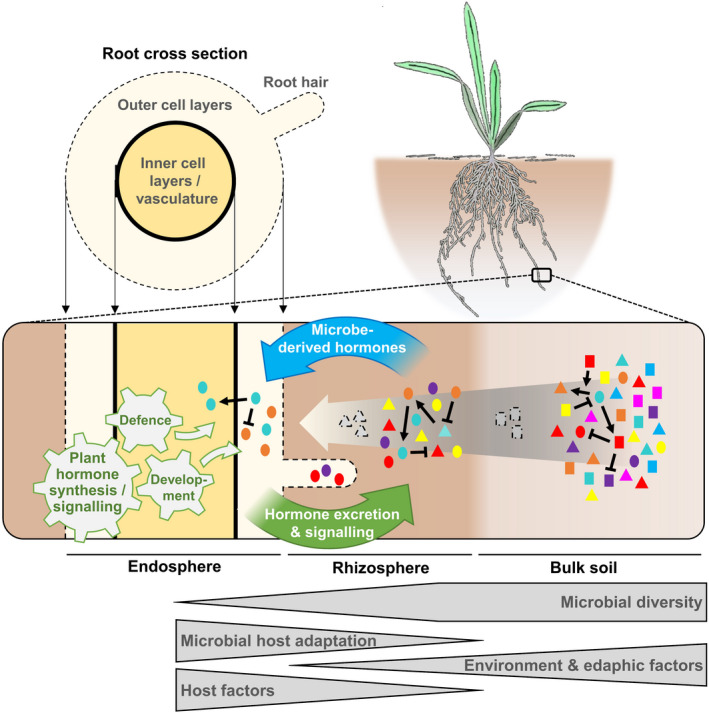Figure 2.

Hormone function in the assembly of microbiota. The ability of soil microbes to colonise the rhizosphere or endosphere is dependent on their degree of specialisation (indicated by grey arrow in the inner scheme). While the abiotic environment and edaphic factors (e.g. soil properties) affect the composition of microbial communities in bulk soil, microbe‐derived and plant‐excreted hormones contribute to their assembly in the plant rhizosphere. Hormone‐dependent developmental and defence‐related processes inside the plant shape the endosphere community. Microbe–microbe interactions contribute to the assembly of microbiomes across all habitats (indicated by ↑ and ↓). While, in general, microbial diversity is found to be lower in rhizosphere versus bulk soil, metatranscriptome analyses revealed similar diversities in both compartments but differences in microbial composition (Turner et al., 2013b). Due to further evolution‐driven microbial host adaptation processes and host factors, microbial diversity is lower in the endosphere and only highly host‐adapted microbes are able to colonise outer and/or inner root layers (incl. vasculature).
